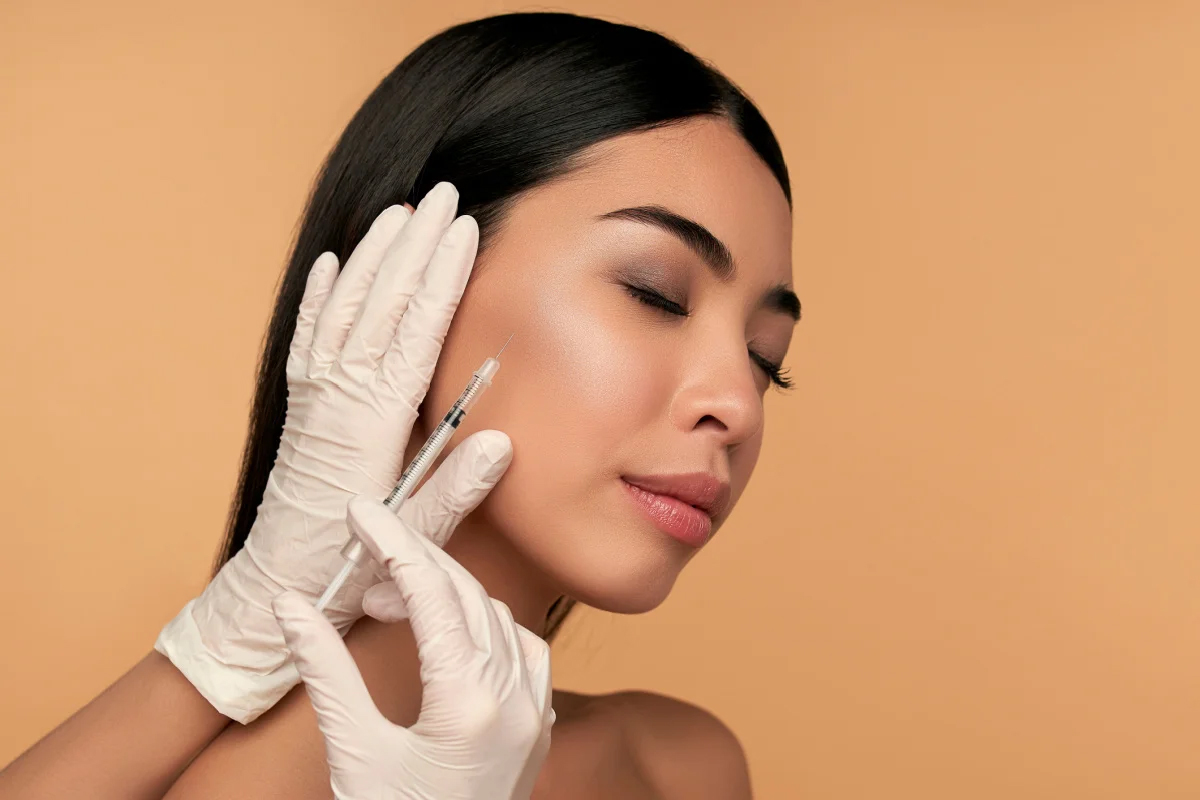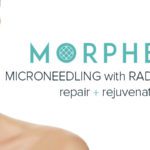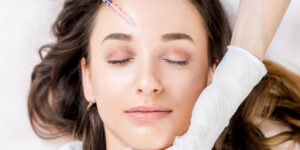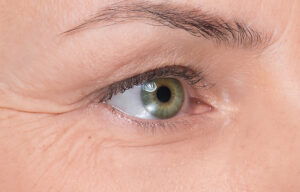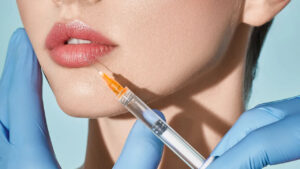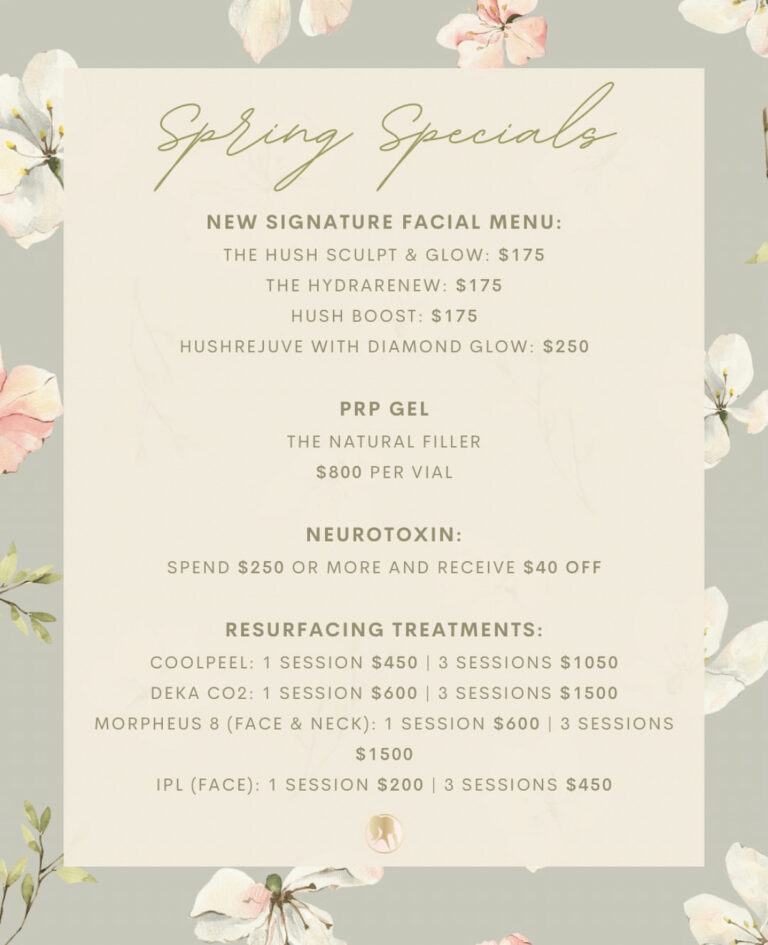Dermal Filler injections
Dermal filler injections a.k.a. beauty injections are able to pull up the face oval, reduce the pores and smooth wrinkles, increase the elasticity of the skin, fill the missing volume, and even out the relief folds of the skin. Dermal filler injectables are new-generation cosmetic products injected underneath the skin or muscles through a needle to reduce facial folds and wrinkles and improve contour and volume in various areas of concern.
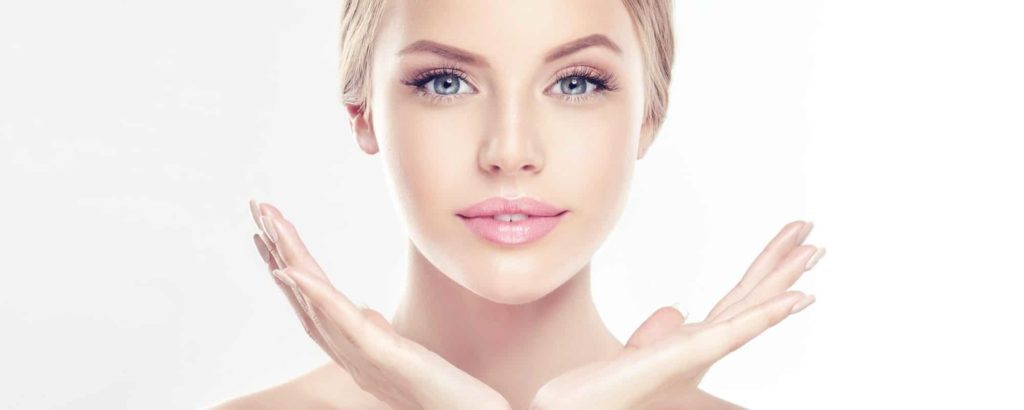
WHAT ARE FACIAL FILLERS?
WHAT ARE FILLERS?
Facial fillers are gel-like substances for non-surgical rejuvenation that help get rid of deep wrinkles and restore lost volume, smooth lines and soften creases, or enhance facial contours.
Most often, fillers are used by those who want to remove nasolabial folds and wrinkles around the mouth and eyelids, fill in the brow crease, and add volume to the lips. More than 1 million men and women annually choose this popular facial rejuvenation treatment, which can be a cost-effective way to look younger without surgery or downtime.
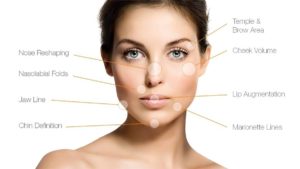
Cosmetologists believe that the injected hyaluronic acid stimulates the production of its own collagen, which, in turn, is able to “push out” scar marks.
In addition, the controlled trauma that the cannula inflicts on the skin triggers natural repair processes.
Fillers for the face are divided primarily into absorbable and not. The latter (they consist of silicone and polyacrylamide) were popular at the beginning of the 21st century, but since then cosmetology has stepped far forward, and they are no longer being used – mainly due to the fact that they can only be removed surgically, and the risk of complications pretty high.
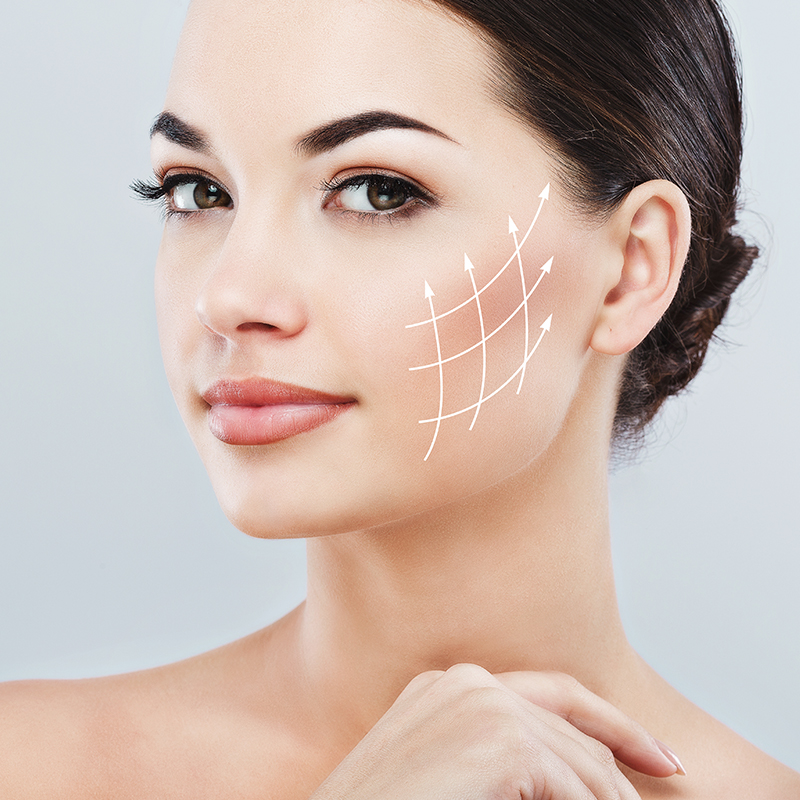
Dermal filler injections based on hyaluronic acid
Hyaluronic filler, as a rule, solves two problems at once: it corrects imperfections without surgical intervention and starts the production of its own hyaluronic acid.
Hyaluronic acid fillers vary in density. The aesthetician usually decides what exactly to inject under the skin, depending on the area of concern.
“Soft” fillers are used to work with nasolacrimal grooves. Denser dermal fillers are for the correction of wrinkles around the lips.
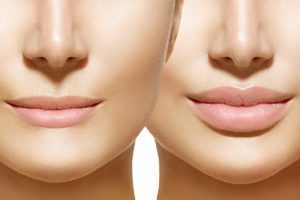
Hyaluronic acid fillers are uniquely formulated to have a certain texture, density, and injection depth, which means that certain fillers work better for certain areas of concern. While your provider will determine what product is best for you, the following diagram illustrates in general where cosmetic surgeons tend to apply certain products:
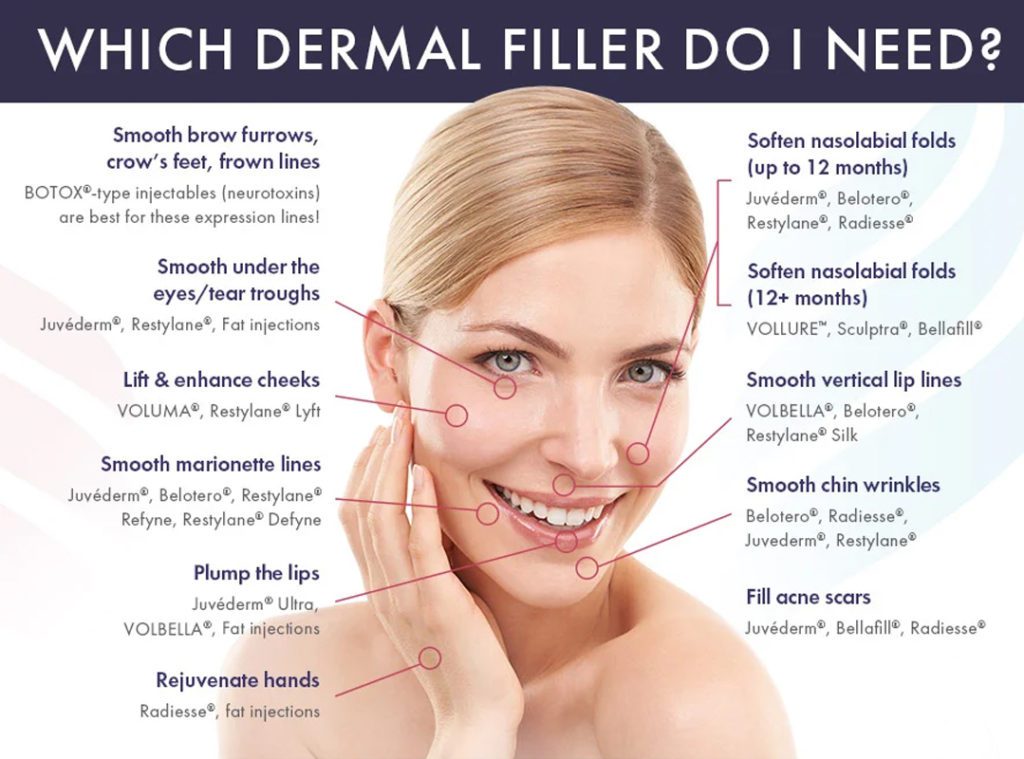
Juvederm
Revanesse Versa
Restylane Dermal filler
Juvederm is a brand of hyaluronic acid-based dermal filler. The company produces several types of hyaluronic acid fillers – Ultra, Ultra Plus, Vollure, Volbella, and Voluma – varying in thickness and elasticity.
Juvéderm XC and Vollure are ideal for “filling in” nasolabial folds (the lines that run between the nose and mouth). XC can help restore lost volume in the chin and mouth, while Voluma and Ultra Plus are meant for deep injection into the cheeks and chin.
Vollure can help with marionette lines, a.k.a. the “parenthesis” that form around the mouth. Ultra is often used to augment the lips, while Volbella is great at improving vertical lip lines.
Revanesse Versa is an innovative soft tissue filler, created from Hyaluronic Acid (HA). The high molecular weight of Revanesse Versa’s HA ensures smooth, consistent results, retaining vital moisture in the treated area for long-lasting results.
The filler is an excellent choice for eliminating fine facial lines as well as deeper creases, including the Glabella or Frown Lines between the brows, the Nasolabial Folds, and around the eyes and mouth. Revanesse Versa offers several advantages: each treatment takes only a few minutes, has little to no downtime, and provides immediate results.
Restylane fillers include Restylane, Restylane Silk, Restylane Lyft, Restylane Refyne, Restylane Defyne, Restylane Kysse, Restylane Contour. Restylane Refyne is ideal for improving more subtle nasolabial folds and marionette lines, while Defyne is great for smoothing deep-set folds around the mouth. Contour is most often used to correct sunken cheeks. Kysse was formulated specifically for lip augmentation, and Silk is ideal for correcting vertical lip lines and wrinkles around the lips.
This dermal filler injectable is ideal for sensitive skin. Also, one of the advantages of Restylane is its light and elastic structure, which allows you to add the injectable to the necessary areas during the correction, without waiting for the removal of the previous “batches”. The corrector does not cause bruising, swelling, or inflammation.
The dermal filler injection areas
Dermal filler injections on lips
Fillers for Nasolabial fold
The aesthetician corrects the shape and contour of the lips with the filler, and also gives them volume. The corners of the lips can also be lifted. Depending on the concern or desired results, specialists choose compositions of different densities.
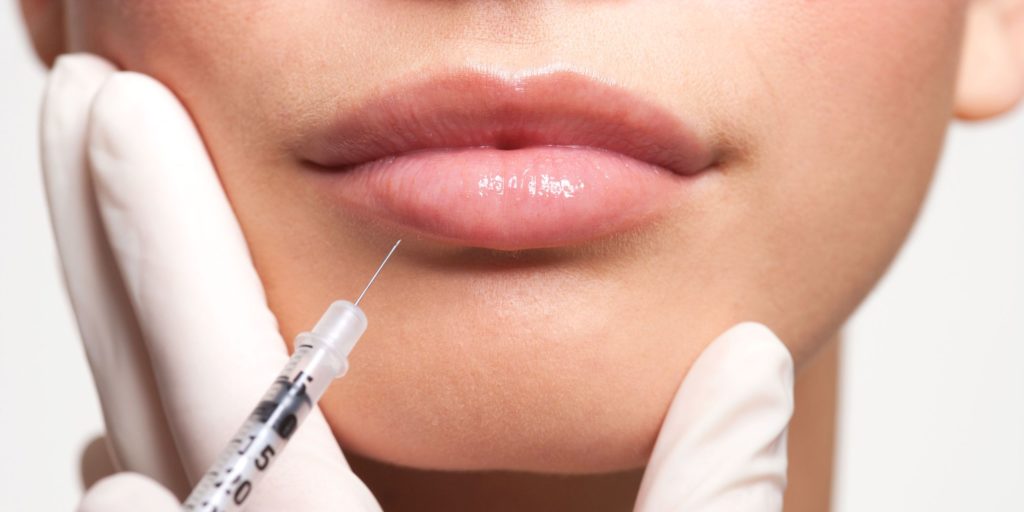
Nasolabial fold filler can be used to lift and treat these folds, which occur with aging and volume loss in the cheek area. Nasolabial folds are the lines from the lower nose corner to the corner of the mouth which make the face appear more aged. Dermal filler injections will make the area look smoother and younger, with less of a demarcation between the cheeks and the lower face.
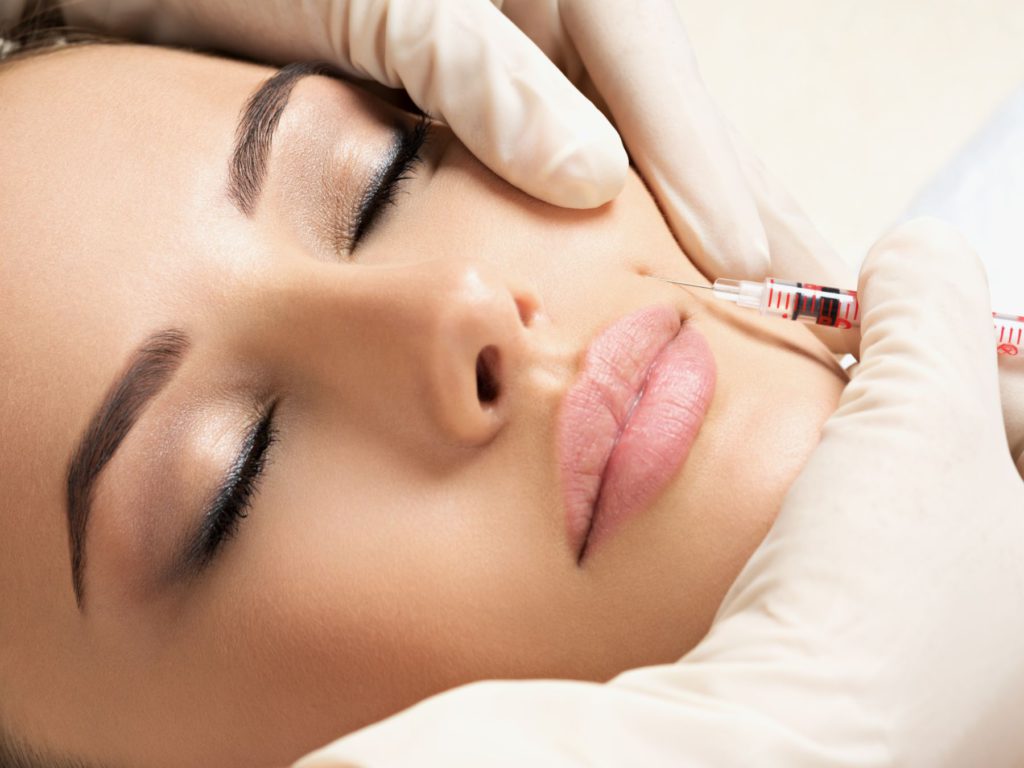
Dermal fillers for between the eyebrows
Dermal filler injections for under the eyes
Cheekbone correction via fillers
The creases between the eyebrows (they are also called the “seal of anger” or “wrinkles of the proud”) are also smoothed out with the help of fillers. True, unlike Botox, hyaluronic acid is not capable of stopping active facial expressions, so fillers will not get rid of such wrinkles for a long time, and the “eyebrow” will require other options for solving the problem.
The area under the eyes is characterized by different problems.
The first is wrinkles. The second is dark circles. And the third is swelling. In this delicate area, experts advise using low-density fillers.
To correct the areas of cheekbones and chin is a very delicate procedure.
The fact is that the composition injected under the skin interacts with bone tissue here, which means it can linger in these areas much longer.

Dermal fillers procedure
A dermal fillers procedure includes the following steps:
1. Facial assessment & mapping
If you choose to utilize packaged soft tissue fillers, the plastic surgeon, or his specially-trained nurse, will evaluate your facial appearance and skin tone and examine the areas of your face to be augmented.
Strategic points on your face may be marked as the appropriate injection sites for the filler. Photographs may be taken of the areas to be treated.
2. Cleansing & anesthetizing
The injection sites will be cleansed with an antibacterial agent.
Pain at the injection site may be ameliorated by the use of a very cold instrument to chill the skin, anesthetic ointment to numb the skin, or, injection of local anesthesia.
While not painless, the injections are usually easily tolerated.
3. The injection
Injection usually takes only a few moments per site. The process of injecting, massaging, and evaluating the result is performed, and additional filler is added as needed.
Depending on the number of areas to be treated, the whole process may be as short as 15 minutes, or as long as an hour.
4. Clean-up & recovery
Once the results are deemed satisfactory, any markings will be cleansed off.
You may be offered an ice pack to reduce swelling and alleviate discomfort. Although the area may feel a bit tender for a day or two, it is usually not painful enough to require any medication.
Recovery period
You will see the immediate result, however, it’s not going to be the final one, which will appear after 2-3 weeks. Recovery time varies for each patient and for each type of filler injected. You can resume most activities right away, but it is generally recommended that you avoid intense physical activity for the first 24-48 hours to minimize swelling and bruising. Be sure to discuss your specific recovery plan with your physician prior to scheduling your injections.

